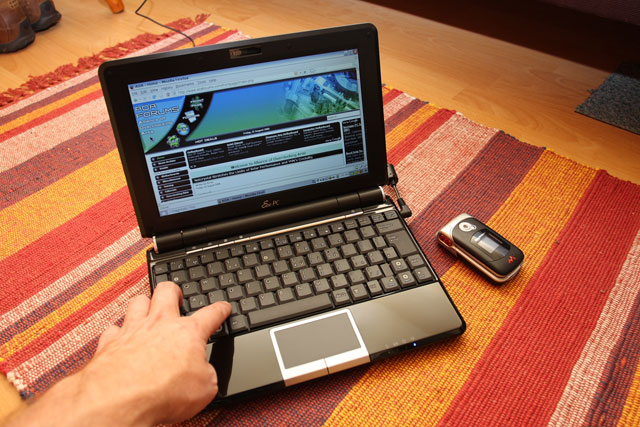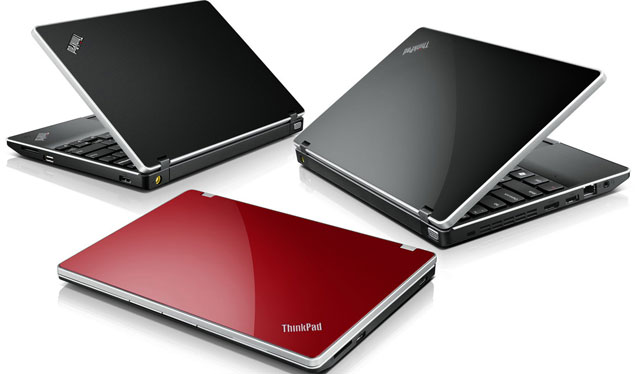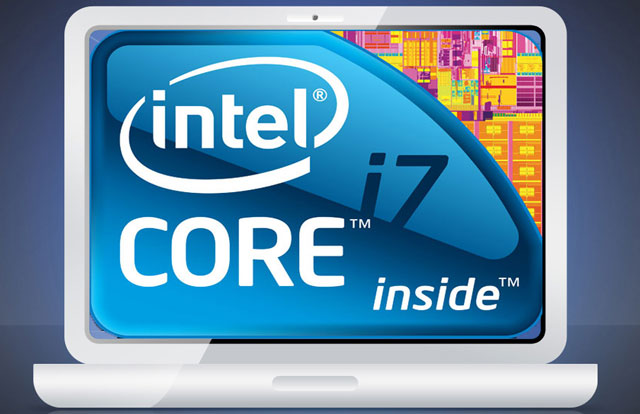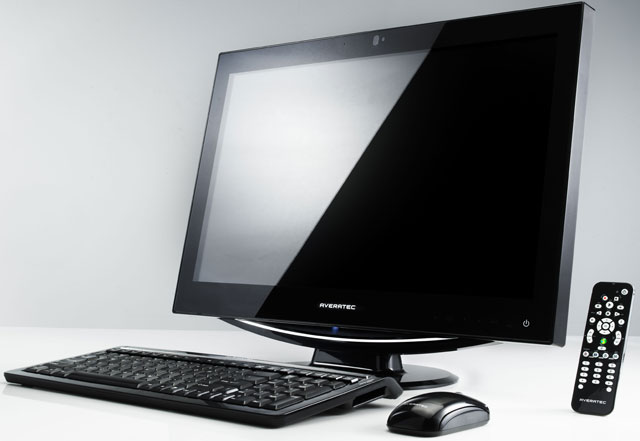The event of the 'village' laptop in 2010
The year 2010 saw the rise of a thin and light compact laptop while the netbook was no longer a "fever". All-in-one computers have appeared but not yet a trend.

Netbooks are no longer as hot as they were a year ago.
After a year of intense development, 2010 began to witness the decline of netbooks. Some new models were launched by big companies like HP with Mini 210 , 5102 , Acer with Aspire One D255 or Asus with the Eee PC 1215N launched earlier this year at CES 2010 but did not get as much attention as before. Also after this time, netbooks are almost lost on newspapers and technology magazines.
The netbook is no longer "hot" as before is understandable, because these models often have quite weak handling capabilities , entertainment features are simply overkill as not being able to watch high-definition video, no You can surf multiple websites at the same time despite the advantages of compact and cheap. The emergence of the new generation dual-core Atom processor to increase processing capability but not enough to "re-activate" the phenomenon of 2009.

Attractive slim, small-sized laptops like the Edge 11 are a more affordable choice than netbooks for many users.
The downward movement of netbooks facilitates the development of thin and light design laptops. Most use Core i or lower processor Core i ULV, but still powerful enough to perform many tasks such as watching high definition video, smooth web surfing and playing some average games while price Very attractive, only about 12 to 15 million VND. The common screen of this model is about 11 to 13 inches and weighs less than 1.5 kg.
Some representative representatives of the line are Lenovo U260, Toshiba T230, ThinkPad Edge 11 or a bit more expensive, the Sony Vaio Y costs about VND 16 million.
Even a line of gaming machines like Alienware has been expanded by the M11x version with a screen size of only 11.6 inches. Big brands like Sony and Toshiba also launched their flagship models in the year with "terrible" Vaio Z and the world's lightest 13-inch laptop R700 all weighed about 1.3 kg and 13 inch screen size. .

Core i laptop occupies almost completely the market of laptop processors in 2010.
The year 2010 witnessed the massive development of computers using Intel Core i series processors. Launched at the end of last year, the microprocessor has almost dominated the laptop market at the moment. Models using Core i chips were also much more affordable than at the beginning of the year.
Laptops using Core i3 are commonly used for low-cost models such as Acer Aspire 4745G , Toshiba Satellite L640 is only about 11 to 12 million VND while Core i5 has also dropped sharply to 13 to 14 million VND. Core i7 chips are often used for high-end laptops like ThinkPad X201s or Sony Vaio Z.
Most vendors upgrade their models with Intel Core i. Meanwhile, models using Core 2 Duo chips are very few and only appear in models with prices below 10 million VND. In the second half of this year, the arrival of the Pentium Dual Core P6000 chip (a low-cost version of the Core i3 chip) made the Core 2 Duo stand out in the low-cost laptop market share.
Core i chips around the second half of the year also welcomed the arrival of low-voltage Core i chips. It is no less powerful than its brothers, but it helps laptops use it more energy-efficient. Typical of these can be mentioned as Sony Vaio Y Core i3 ULV cost about 16 million.

All in one desktop is becoming a new trend.
Although not yet a clear trend, the desktop market is beginning to turn to "all in one " computers. This model often has the advantage that the design is very attractive, saves space and can become a decoration for indoor and office space. However, the drawback has made the "all-in-one" computer less popular, with fewer models with superior configuration and very limited ability to upgrade and customize hardware.
Some outstanding products for this trend are ThinkCentre, Lenovo 's IdeaCentre , HP's PC200 , Acer's AZ3750-A34D , and Apple's Apple iMac.
You should read it
- The most impressive laptops in early 2010
- Excellent notebook collection in 2010
- 5 options for thin, light laptops for entrepreneurs
- Asus, Toshiba, Sony are the most reliable
- Top-notch laptops can replace desktop computers
- Toshiba demonstrated a hybrid computer with a removable keyboard
- Laptops play games with 4K video from Toshiba
- 'The first' laptop uses Sandy Bridge chip
May be interested
- Event (Event) in C #
 events (events) are the actions of users, such as pressing keys, clicking, moving mouse ... applications need to respond to these events when they appear. for example, interrupts. events (events) are used to communicate within the process.
events (events) are the actions of users, such as pressing keys, clicking, moving mouse ... applications need to respond to these events when they appear. for example, interrupts. events (events) are used to communicate within the process. - Look up the Event ID from Event Viewer with the free tool
 in this tutorial, i will show you how to search the event id from the event viewer with the free event log explorer tool.
in this tutorial, i will show you how to search the event id from the event viewer with the free event log explorer tool. - How to start / stop Windows Event Log
 the service windows event log manages events and event logs. this service supports logging, querying, registering, logging, and managing event metadata.
the service windows event log manages events and event logs. this service supports logging, querying, registering, logging, and managing event metadata. - Focus CES 2007: Laptop and hard drive
 only a few days left is the biggest exhibition of the technology village - ces 2007 will officially open. this year, the mantra of laptop manufacturers is nothing more than windows vista, microsoft's upcoming operating system.
only a few days left is the biggest exhibition of the technology village - ces 2007 will officially open. this year, the mantra of laptop manufacturers is nothing more than windows vista, microsoft's upcoming operating system. - Meet 9 emerging billionaires of the current technology village
 invite you to meet 9 emerging billionaires of the current technology village!
invite you to meet 9 emerging billionaires of the current technology village! - How to access Event Viewer in Windows 10
 with the help of event viewer, you can view the events that happened on your computer. this article introduces 6 methods to open the event viewer application on windows 10. please read the reference!
with the help of event viewer, you can view the events that happened on your computer. this article introduces 6 methods to open the event viewer application on windows 10. please read the reference! - Apple issued an invitation for the event on September 9, 2014
 apple today has issued an invitation for the event that will take place on september 9, 2014. certainly at this event the iphone 6 is expected to be released, but the tech community is also hoping for apple's first wearable device, which is still called the iwatch.
apple today has issued an invitation for the event that will take place on september 9, 2014. certainly at this event the iphone 6 is expected to be released, but the tech community is also hoping for apple's first wearable device, which is still called the iwatch. - Steps to use Event Viewer in Windows 10
 windows 10's event viewer helps troubleshoot problems with apps or to see what your pc was doing most recently.
windows 10's event viewer helps troubleshoot problems with apps or to see what your pc was doing most recently. - The best Event log software and analysis tools
 log is a useful source of information, because it contains records of all actions taken on the network. in fact, when properly exploited, logs can provide detailed information about network performance, usage and management.
log is a useful source of information, because it contains records of all actions taken on the network. in fact, when properly exploited, logs can provide detailed information about network performance, usage and management. - Mysteriously the village thousands of birds find themselves 'suicide' every year
 when the sunset falls, the sky is dark, hundreds of collective suicide birds rushing down from the sky and crashing into trees or village houses.
when the sunset falls, the sky is dark, hundreds of collective suicide birds rushing down from the sky and crashing into trees or village houses.










 LG introduced Xnote P210 ultra-thin laptop
LG introduced Xnote P210 ultra-thin laptop HP Envy 13 discounted $ 450
HP Envy 13 discounted $ 450 Apple aims to sell more than 20 million iPhones in the first quarter of 2011
Apple aims to sell more than 20 million iPhones in the first quarter of 2011 The 13-inch MacBook Pro is the best-selling laptop on Amazon
The 13-inch MacBook Pro is the best-selling laptop on Amazon Lenovo lifted 'class' for ThinkPad Edge
Lenovo lifted 'class' for ThinkPad Edge Toshiba displays 3D Laptop without glasses
Toshiba displays 3D Laptop without glasses